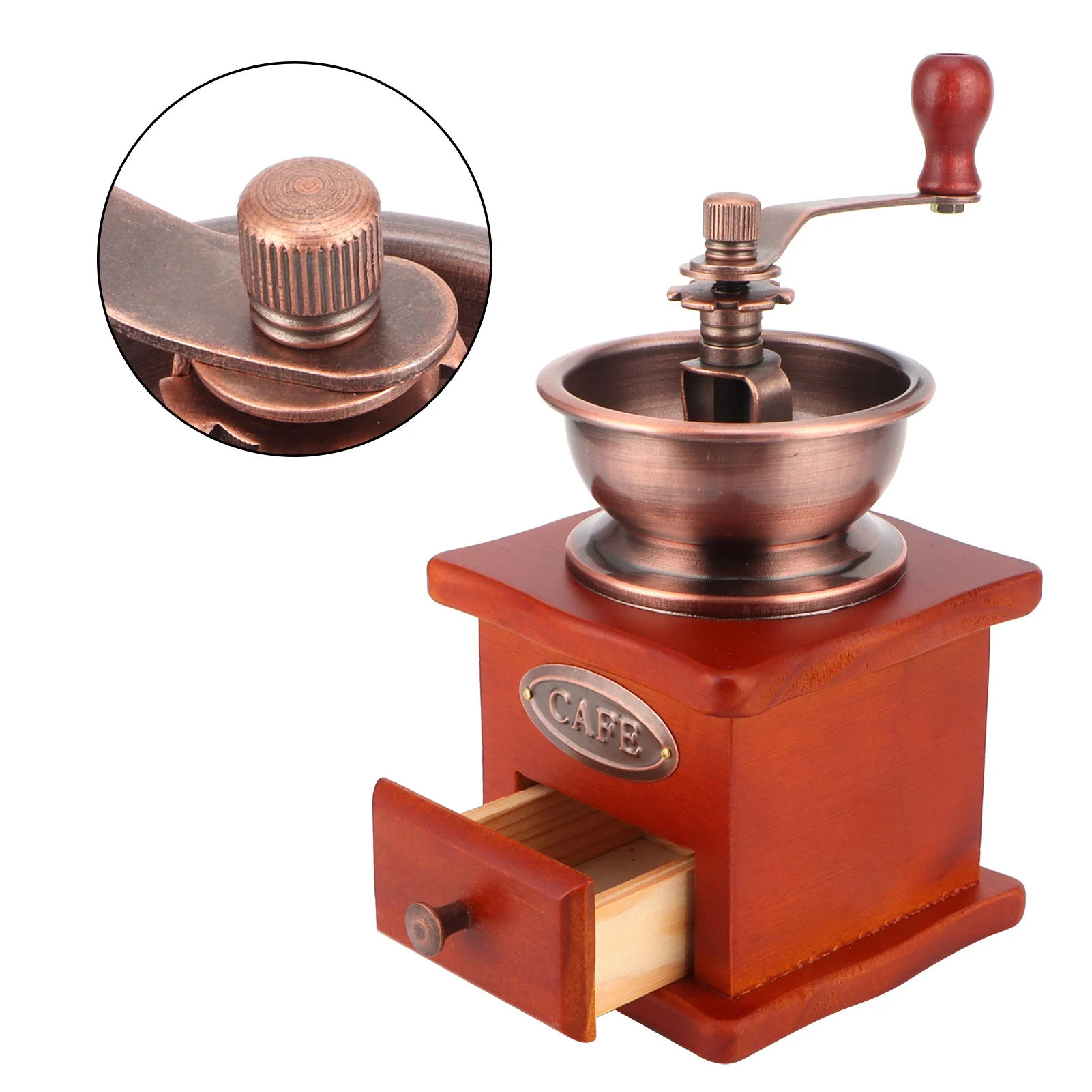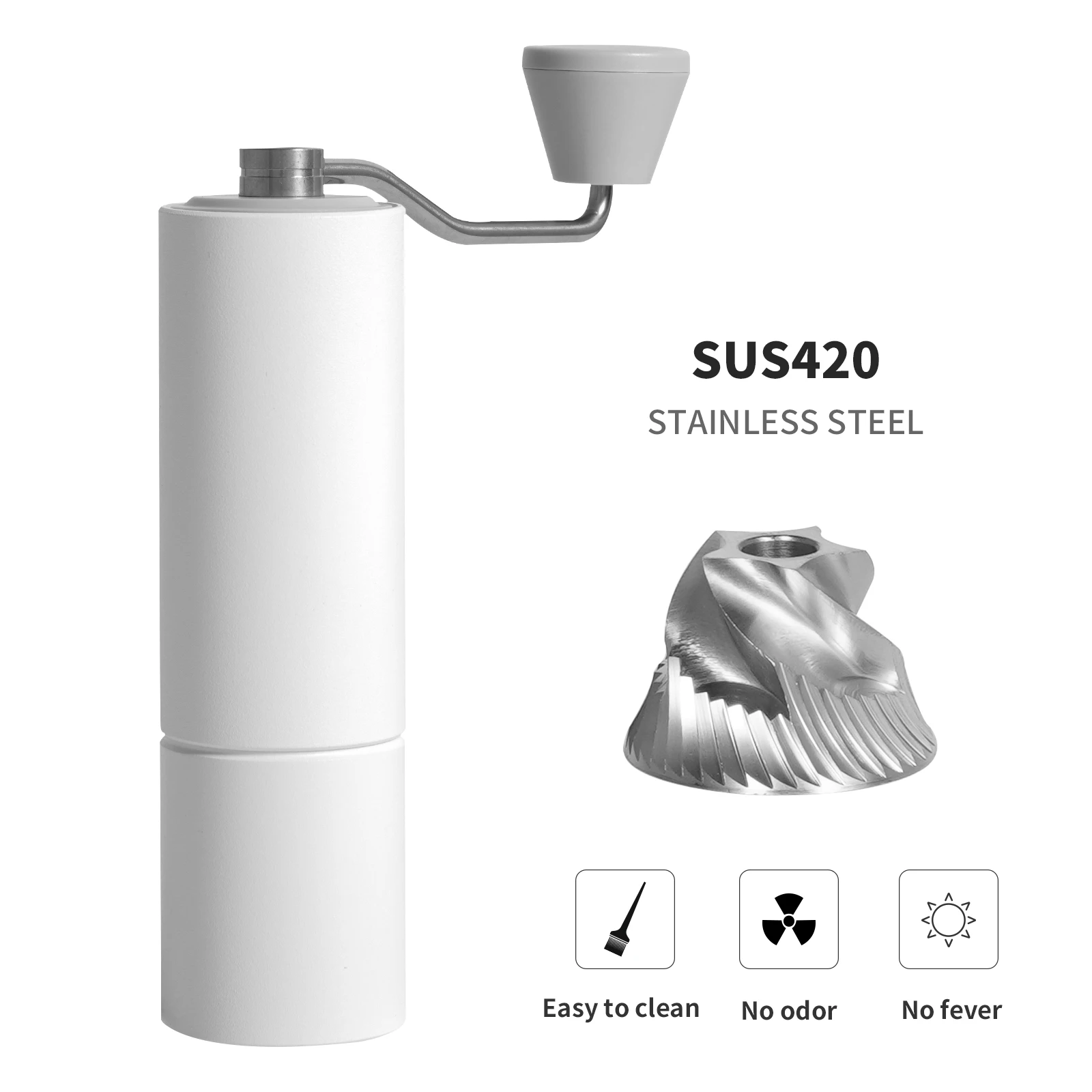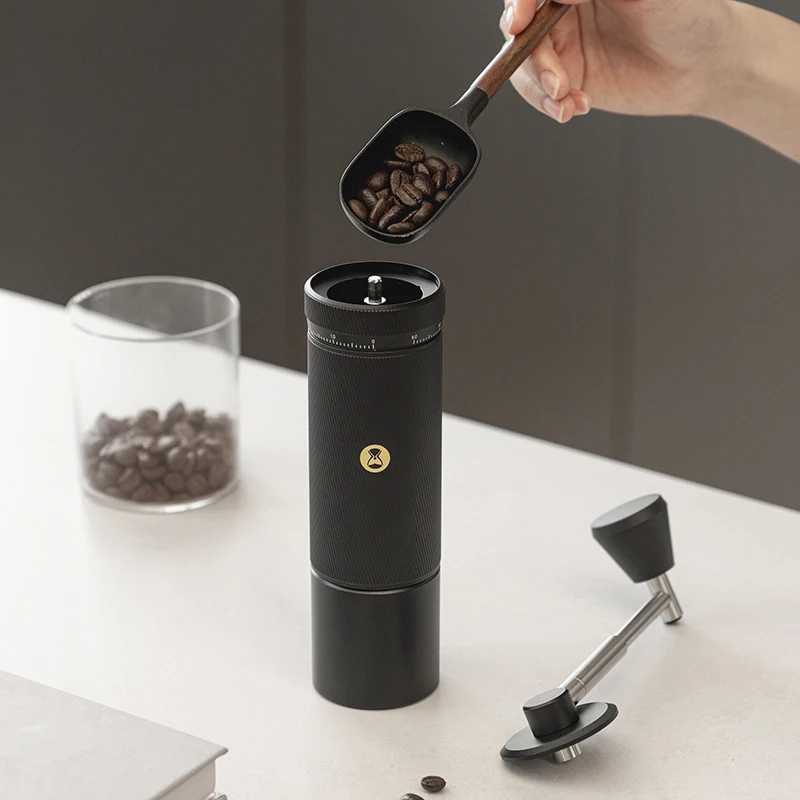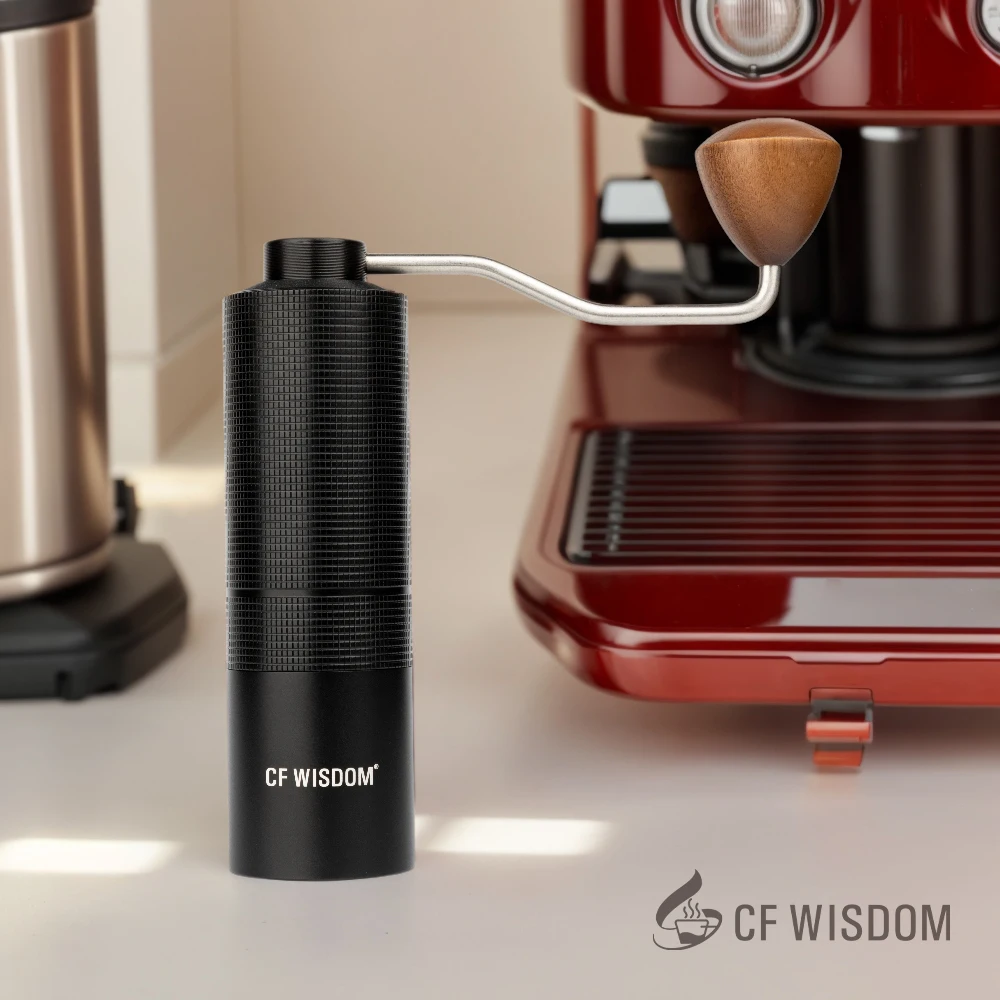The Importance of Grind Uniformity: Foundation for Perfect Coffee
Anyone serious about coffee knows that the perfect cup starts long before water touches the grounds. At the heart of exceptional coffee lies a fundamental yet often overlooked element: grind uniformity. This refers to how consistent the size of your coffee particles are after grinding. When coffee particles are uniform in size, they extract at the same rate, creating a balanced, flavorful cup.
Why does this matter so much? Inconsistent particle sizes lead to uneven extraction—smaller particles over-extract (creating bitterness) while larger particles under-extract (creating sourness). This imbalance creates a cup that lacks harmony, with competing flavors rather than a cohesive profile.
The relationship between mastering grind consistency and brewing method is particularly important. Each brewing technique—from espresso to French press—requires specific particle sizes to achieve optimal extraction. When your grinder produces inconsistent results, you’re fighting an uphill battle regardless of water quality or bean origin.
Manual grinders can produce inconsistent results due to several factors that we’ll explore, but the good news is that these issues can be addressed with proper technique and maintenance. Understanding the various factors affecting grind consistency is the first step toward improvement.
The relationship between grind consistency vs speed also plays a critical role in coffee preparation. Many beginners make the mistake of grinding too quickly, sacrificing consistency for speed. For truly exceptional coffee, consistency should always be prioritized over convenience.
Recognizing these principles will help you understand why the techniques we’ll cover are so important. With quality hand burr grinders and proper technique, you can achieve professional-level consistency that transforms your daily brewing ritual.
Understanding Manual Burr Grinder Mechanics
To master uniform grinding, you must first understand how your manual burr grinder actually works. These seemingly simple devices operate on precise mechanical principles that directly impact grind consistency.
A manual burr grinder consists of several key components working in harmony:
Hopper system – The top section where whole beans enter and the bottom chamber where ground coffee collects.
Burr set – The heart of the grinder, comprising two textured surfaces that crush coffee beans. Manual grinders typically use one of two burr designs:
– Conical burrs: Where a cone-shaped center burr fits inside an outer burr
– Flat burrs: Where two parallel rings with cutting teeth face each other
The differences between these designs are significant, with flat vs conical burr manual grinders each offering distinct advantages for particular brewing styles.
Burr materials – Most commonly ceramic or steel, each with specific properties:
– Ceramic: Stays cooler during grinding but more brittle
– Steel: More durable and typically sharper but conducts more heatAdjustment mechanism – Controls the distance between burrs to determine grind size:
– Stepped adjustment: Clicks into preset positions
– Stepless adjustment: Allows infinite fine-tuningHandle and shaft assembly – Transfers your manual power to the burrs through an axle system
Unlike blade grinders that randomly chop beans, burr grinders crush them between two surfaces in a controlled manner. This shearing force creates particles with consistent size and shape. The beans are caught between the burrs’ teeth and progressively broken down into smaller pieces until they’re small enough to pass through the gap between burrs.
This precise crushing action is why manual coffee burr grinders produce far more consistent results than blade grinders, which simply chop beans randomly. The size of ground particles is determined by the gap between the burrs—wider for coarse grinds, narrower for fine grinds.
Understanding these components helps you see how they work together—or sometimes against each other—to create consistency in your daily grind.
Common Causes of Inconsistent Grinding
Even with a quality manual burr grinder, several factors can sabotage your quest for the perfect grind. Identifying these common problems is the first step toward solving them:
Burr alignment issues and wobble – The critical impact of burr alignment cannot be overstated. When burrs aren’t perfectly parallel or concentric, different sections will produce different-sized particles. This results in an uneven extraction that no brewing technique can fully compensate for. Signs include visible wobbling of the central shaft during grinding.
Poor quality or worn burrs – Dull, cheap, or damaged burrs create more “fines” (dust-like particles) and “boulders” (oversized chunks). Over time, even quality burrs wear down and lose their precision edge.
Unstable grinding technique – Inconsistent hand movement or pressure during grinding causes varying speeds and forces that affect particle consistency. If you’re wondering why your coffee grinder is not consistent, your technique might be the culprit.
Ineffective grind size settings – A loose or imprecise adjustment mechanism can drift during grinding, creating a mixture of different grind sizes.
Bean-related factors – Unevenly roasted beans, varied moisture content, or very fresh beans (less than 48 hours after roasting) can all contribute to inconsistent grinding results.
Maintenance issues – Coffee oils and fine particles accumulate in the burrs and grinder components, affecting both performance and flavor. Regular cleaning is essential for consistent results.
Structural problems – Loosening of components over time creates play or movement that wasn’t in the original design, especially in lower-quality grinders.
Overloading the grinding chamber – Trying to grind too many beans at once can overwork the mechanism and create inconsistent pressure on the burrs.
These issues compound one another—for example, poor technique combined with dull burrs magnifies inconsistency problems. When shopping for a new grinder, consider precision manual grinders specifically designed to minimize these common issues through improved engineering and materials.
Understanding these problems will help you identify which specific issues might be affecting your grinder and guide you toward appropriate solutions.
Proper Grinding Technique for Maximum Consistency
The way you physically operate your manual grinder significantly impacts grind consistency. Follow these techniques to immediately improve your results:
Optimal Hand Grinding Procedure:
- Proper grip and stance:
- Hold the grinder body firmly with your non-dominant hand
- Keep the grinder vertical and stable against a solid surface
Maintain a comfortable, balanced posture that you can hold consistently
Consistent cranking technique:
- Use smooth, even rotations at a moderate pace
- Maintain a steady rhythm rather than varying speeds
- Turn the handle in complete circles without stopping and starting
Aim for about 1-2 rotations per second for most grind settings
Optimal bean loading:
- Grind in smaller batches (15-20g) for more consistent results
- Avoid overloading the chamber, which creates irregular resistance
Consider single-dose grinding for maximum consistency
Stability methods:
- Brace the grinder against a counter or table edge
- For travel, sit and hold the grinder between your knees
- Some grinders benefit from a non-slip mat underneath

Different grind sizes may require slight technique adjustments. For example, fine espresso grinds benefit from slower, more deliberate turning, while coarser French press grinds can handle slightly faster rotation without sacrificing consistency.
When comparing options, understanding the advantages of manual burr vs electric blade grinders highlights why proper technique with a quality burr grinder produces superior results. The control you have with a manual grinder allows for precision that automatic options often lack.
For maximum consistency across multiple batches, create a personal “grinding protocol”—same position, same speed, same batch size—and follow it each time. This methodical approach, combined with quality manual burr mills, produces remarkably consistent results that directly translate to better-tasting coffee.
Calibrating Your Grinder: Finding Your Perfect Setting
Proper calibration is essential for achieving consistent results from your manual grinder. This systematic approach helps you find and maintain your ideal grind settings:
Finding “True Zero”:
1. Clean your grinder thoroughly before calibration
2. Turn the adjustment knob clockwise until the burrs just begin to touch
3. Listen for a slight metal-on-metal sound or feel for resistance
4. This is your “true zero” point—the baseline for all adjustments
5. Mark this position (some grinders allow for marking the collar)
This zero hand grinder calibration process establishes your reference point for all other settings.
Systematic Calibration Process:
1. Start from your true zero point
2. Turn the adjustment ring counter-clockwise in small increments:
– For espresso: 1-3 “clicks” or minimal turns from zero
– For pour-over: 8-12 “clicks” or about ¼-½ turn from zero
– For French press: 15-20 “clicks” or about a full turn from zero
3. Grind a small sample batch at each setting
4. Compare the ground coffee to reference images or samples
5. Test in your brewing device and adjust based on results
6. Record successful settings for future reference
Creating Your Reference Chart:
– Record specific settings for each brewing method
– Note the bean variety and roast level that worked with each setting
– Create physical markers on your grinder if possible
– Take photos of successful grinds for visual reference
Many coffee enthusiasts find that fine adjustment hand grinders offer more precision in this calibration process, particularly for espresso and pour-over methods where minor adjustments make significant differences.
Matching Grind to Brewing Method:
– Espresso requires very fine, powder-like consistency
– Pour-over works best with medium-fine grind (similar to table salt)
– French press needs coarse grind (similar to sea salt or bread crumbs)
– Cold brew requires the coarsest setting (similar to peppercorns)
Remember that different grinders use different calibration systems. A “3” on one grinder isn’t equivalent to a “3” on another. Create your personalized reference system based on your specific equipment.
Regular recalibration (monthly for most users) ensures your grinder maintains consistency as components naturally shift with use.
Essential Cleaning and Maintenance Routines
Regular maintenance is the unsung hero of grind consistency. Even perfect technique can’t overcome a dirty or neglected grinder. Follow these maintenance schedules to preserve your grinder’s performance:
Daily Quick Cleaning (After Each Use):
– Brush out grounds from the collection chamber
– Tap the grinder gently to dislodge trapped particles
– Wipe exterior with a dry cloth
– Store in a clean, dry place
Weekly Deeper Cleaning:
– Disassemble the ground collection chamber
– Brush all visible coffee residue from burrs
– Use a vacuum with brush attachment for hard-to-reach areas
– For wooden grinders, wipe with a barely damp cloth and dry immediately
Monthly Maintenance Check:
– Complete disassembly following manufacturer instructions
– Deep clean burrs with a dedicated coffee grinder brush
– Check for loose screws or components and tighten if needed
– Inspect burrs for signs of wear or damage
– Reassemble carefully, ensuring proper alignment

Safe Cleaning Techniques:
– Do use: Dry brushes, grinder cleaning tablets, uncooked rice or bread (for absorbing oils), compressed air
– Don’t use: Water on burrs (causes rust), dish soap, abrasive cleaners
For specific grinder types, consult our comprehensive manual burr grinder maintenance guide which provides model-specific instructions.
Burr Seasoning for New Grinders:
New grinders benefit from “seasoning” to smooth microscopic burr edges:
1. Run 1-2 pounds of inexpensive coffee through new burrs
2. Discard this coffee (or use for cold brew)
3. Clean thoroughly after seasoning
Material-Specific Care:
Ceramic burr coffee grinders require special handling during cleaning as ceramic can chip if dropped or knocked against hard surfaces. Metal burrs are more forgiving but need protection against moisture.
Warning Signs to Watch For:
– Increasing difficulty turning the handle
– Inconsistent grind results despite proper technique
– Unusual noises during grinding
– Excessive wobble in the central shaft
– Visible damage to burrs or adjustment mechanisms
Regular maintenance prevents most consistency issues and extends your grinder’s life, making it a worthy investment of a few minutes each week.
Troubleshooting Common Grind Uniformity Problems
Even with proper technique and maintenance, you may encounter specific issues that affect grind consistency. Here’s how to diagnose and solve the most common problems:
1. Problem: Excessive Fines Despite Proper Setting
Diagnosis:
– Are your beans very fresh (less than 4 days after roasting)?
– Is your grinder properly aligned?
– Are you grinding at a consistent speed?
Solutions:
– Allow beans to rest 5-10 days after roast date
– Check for understanding burr alignment features and adjust if possible
– Use slower, more consistent turning speed
– Consider upgrading to a grinder with superior burr quality
2. Problem: Inconsistent Particle Size Distribution
Diagnosis:
– Does your grinder wobble during use?
– Is the adjustment ring secure?
– Are you maintaining consistent pressure while grinding?
Solutions:
– Stabilize your grinder against a counter or between your knees
– Tighten all external screws and check for loose components
– Use a more consistent grinding motion
– Consider all-metal hand grinders which typically offer better stability
3. Problem: Grind Setting Drifts During Use
Diagnosis:
– Does your adjustment ring have a locking mechanism?
– Are internal components loose?
– Is the adjustment ring clean and free of coffee particles?
Solutions:
– Clean threads on the adjustment mechanism
– Apply slight pressure to stabilize the adjustment ring while grinding
– If available, use the grinder’s locking feature
– Add a small rubber band or O-ring for additional tension on models without locks
4. Problem: Difficulty Turning the Handle
Diagnosis:
– Are you overloading the chamber?
– When was the last deep cleaning?
– Are you using very dark, oily beans?
Solutions:
– Reduce batch size by 25-50%
– Perform thorough cleaning of all grinding components
– For very dark roasts, clean more frequently to remove oils
– Check that burrs aren’t set too fine for your grinder’s capabilities
5. Problem: Uneven Extraction Despite Seemingly Correct Grind
Diagnosis:
– Are you seeing both fines and larger particles?
– Is your distribution in the brewing device even?
– Have you cleaned the burrs thoroughly?
Solutions:
– Sift grounds through a fine mesh to remove excessive fines if necessary
– Improve your grounds distribution technique in the brewing basket
– Check alignment of central shaft and burrs
– Consider upgrading burrs if available for your model
When simple fixes don’t resolve persistent issues, consider whether your grinder has reached its performance limit—even well-maintained budget grinders have inherent limitations in grind consistency.
Advanced Grind Consistency Techniques for Coffee Enthusiasts
For those seeking to extract every bit of potential from their manual grinders, these advanced techniques can elevate your grinding precision to commercial-level consistency:
Bean Pre-Sorting Methods:
– Remove any defective or significantly smaller/larger beans before grinding
– For ultimate precision, use a series of sieves to ensure uniform bean size
– Store beans in small, single-dose containers to maintain consistent humidity
Temperature Stabilization:
– Allow grinder to reach room temperature if stored in cold/hot environments
– For maximum consistency, pre-cool grinders before use (especially metal ones)
– Minimize handling of metal grinders to prevent transferring body heat
The RDT Method (Ross Droplet Technique):
– Add 1-2 drops of water to beans before grinding (using a spray bottle or damp spoon)
– This minimal moisture reduces static and helps control fines
– Particularly effective for very light roasts and low-humidity environments
Single-Dose Grinding Workflow:
– Weigh exact dose of beans before grinding
– Grind complete dose without stopping
– Weigh output to verify minimal retention in grinder
– Use consistent, gentle taps to ensure all grounds exit the chamber

Alignment Modifications:
– Some enthusiasts use paper shims to improve alignment in entry-level grinders
– Specialized tools can help check and adjust burr parallelism
– Marked improvement in consistency is possible through careful alignment tuning
These achieving perfect grind consistency techniques are especially valuable for espresso brewing, where minute differences in extraction can dramatically affect flavor.
For serious enthusiasts, flat burr hand grinders often provide superior particle distribution for pour-over methods, though they typically come at a premium price point.
Fine Adjustment Hand Grinder, Precision Manual Grinder, Travel Coffee Grinder
Price range: $185.11 through $494.63 Select options This product has multiple variants. The options may be chosen on the product pageHand Burr Grinder, Hand Crank Coffee Grinder, Manual Espresso Grinder, Portable Coffee Grinder
Price range: $262.72 through $300.22 Select options This product has multiple variants. The options may be chosen on the product pageManual Burr Mill, Manual Coffee Grinder Stainless Steel, Manual Coffee Mill Grinder, Mechanical Coffee Grinder
Price range: $127.26 through $130.32 Select options This product has multiple variants. The options may be chosen on the product pageHand Burr Grinder, Manual Coffee Grinder Stainless Steel, Precision Manual Grinder
Price range: $183.64 through $187.52 Select options This product has multiple variants. The options may be chosen on the product page
Distribution Techniques:
– The WDT (Weiss Distribution Technique) uses a fine needle tool to break up clumps
– Gentle side-to-side shaking helps even distribution in brewing baskets
– These post-grinding techniques complement consistency from the grinder itself
These advanced methods matter most for specific brewing approaches—espresso and pour-over benefit tremendously, while immersion methods like French press are more forgiving of minor inconsistencies.
When to Upgrade: Limitations of Manual Grinders
Even with perfect technique and maintenance, every manual grinder has inherent limitations. Understanding these constraints helps you make informed decisions about potential upgrades:
Realistic Performance Expectations:
– Entry-level manual grinders ($20-50): Acceptable for French press, not ideal for espresso
– Mid-range options ($60-120): Good general performance, moderate espresso capability
– Premium models ($120-250+): Comparable to electric grinders costing twice as much
Signs Your Grinder Is the Limiting Factor:
– Persistent inconsistency despite proper technique and maintenance
– Inability to grind fine enough for espresso without producing excessive fines
– Significant burr wobble that can’t be corrected
– Unstable adjustment that drifts during grinding
– Excessive fines regardless of technique
Key Features That Improve Consistency in Better Grinders:
– Superior burr design and material quality
– Enhanced stability through better bearing systems
– More precise adjustment mechanisms
– Improved alignment capabilities
– Better build quality with less plastic in critical components
For brewing methods requiring exceptional precision, our definitive guide hand grinders consistent coffee can help identify models known for superior performance.
The relationship between grinder quality and brewing method is crucial—espresso demands the highest precision and benefits most from upgrades. For espresso enthusiasts, specialized espresso coffee hand grinders offer features specifically designed for fine, consistent grinding.
When considering repair versus replacement, factor in the cost of replacement parts against new models with improved designs. Often, upgrading makes more sense when fundamental limitations exist in the original design.
Conclusion: The Rewarding Path to Grind Consistency
Achieving uniform grinding with a manual burr grinder is both an art and a science—a skill that develops through practice, attention to detail, and understanding of the mechanical principles involved. The journey to consistency rewards you with dramatically improved coffee quality that no other brewing variable can compensate for when absent.
The techniques we’ve covered—from proper grinding form to advanced calibration, regular maintenance to troubleshooting—form a comprehensive approach that transforms inconsistent results into reliable precision. Each small improvement compounds, creating a noticeable difference in your daily cup.
Remember that consistency comes through repetition and attention rather than speed. The mindful, deliberate approach to coffee grinding connects you more deeply to the brewing process and enhances your appreciation for the subtle complexity of coffee.
At Savor Suite, we understand that the journey toward perfect coffee starts with uniform grinding. The manual grinder becomes an extension of the brewer’s intent—a precision instrument that, when properly mastered, elevates every other aspect of coffee preparation.
With practice, your technique will become second nature, and you’ll develop an intuitive feel for your equipment that produces consistent results cup after cup. This fundamental skill serves as the foundation for exploring coffee’s endless subtleties and regional characteristics.
The perfect grind awaits—one consistent turn of the handle at a time.







